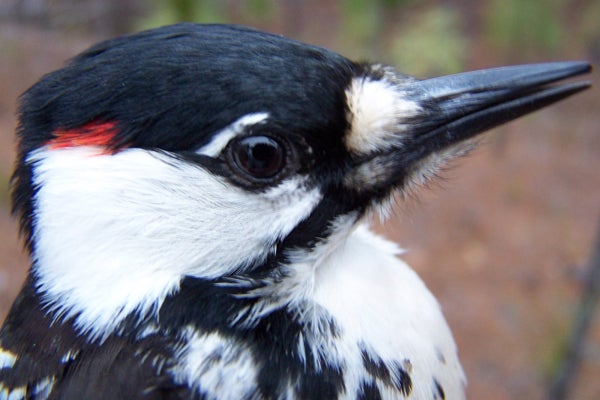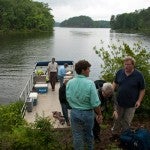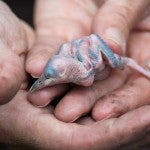
By Justin Averette
On the banks of the Coosa River, a threatened bird is holding its own with a little help from its friends.
The Red-cockaded Woodpecker is a small-to medium-sized bird that is black and white, except for a small red streak that males have on the side of their head.

Before European settlement, as many as 1.5 million of the woodpeckers could be found all the way from Maryland to Texas and everywhere in between, according to the U.S. Fish and Wildlife Service.
However, destruction of the South’s longleaf pine forests — a tree the bird depends on — has reduced its population to vulnerable-for-extinction levels. There are an estimated 16,000 Red-cockaded woodpeckers in the wild today.
About 30 of the birds call the area around Lake Mitchell home on land owned by Alabama Power Company, the state’s Forever Wild program, John Hancock Timber Resource Group and a private individual.
Since a November 2004 tornado downed many of the trees the birds nested in, the power company, biologists and bird lovers have worked together to help the bird recoup.
U.S. Fish and Wildlife biologist Eric Spadgenske led a banding mission in May to help track the birds in his department’s ongoing conservation work.
“No other bird anywhere will have that number,” Spadgenske said while doing his work with the fragile fledglings.

Each bird gets an individual color as well as “cluster colors” to mark them as being from a specific family group.
Alabama Power Company also contracts with consulting biologist Mark Bailey to build artificial nests for the woodpeckers.
It’s not uncommon for the bird’s woodworking to be overtaken by larger woodpeckers, more aggressive birds like blue jays, flying squirrels or rat snakes.
The nests are cut out and then puttied up and painted to look like a natural tree cavity.
“They seem to be holding their own, but it’s a precarious population,” Bailey said.
The birds were about seven or eight days old during May’s banding. They will fledge at 26 days.
In a somewhat unique behavior for birds, some of the males will stick around to help raise their half-siblings and future generations, but they do not breed.
Up to 10 birds can be found in this cooperative group, but only one breeding pair.
Unlike the males, the females are pushed out to find their own group, and many unfortunately die in the process, Spadgenske said.
The birds like old longleaf pines forests for many reasons—not the least being they are great for excavating nests.
“The bird needs old trees, 80 years or more, so it can excavate a cavity into the tree,” Spadgenske said.
The woodpecker also uses the tree’s sap as a defense mechanism against snakes. The bird drills holes into the tree, causing sap to run down the bark, stopping snakes from climbing up into its nests.
Biologists have helped the birds some recently by wrapping the base of trees with nests in aluminum foil, which also keeps the snakes at bay.
Along with building artificial nests and helping ward off predators, Alabama Power has also worked to restore the bird’s habitat to its original look. The bird likes open, park-like forests.
Islands that were once so overgrown they looked like a small jungle have been cleared and are often burned to reduce the midstory.
Spadgenske said the park-like conditions resemble what Alabama would have looked like before settlement, when wildfires were allowed to burn by Native Americans.
The fires help the trees, and the open habitat is good for not only the woodpeckers, but also many of other species, like bobwhite quail, wild turkey, white-tailed deer and fox.
Spadgenske also credits Alabama Power for the work they do.
The company is required to help preserve endangered species in its license to operate the dam, but Spadgenske said the company goes “above and beyond.”
“They have done a tremendous job. This is a phenomenal habitat,” he said. “This is a success story, absolutely.”
